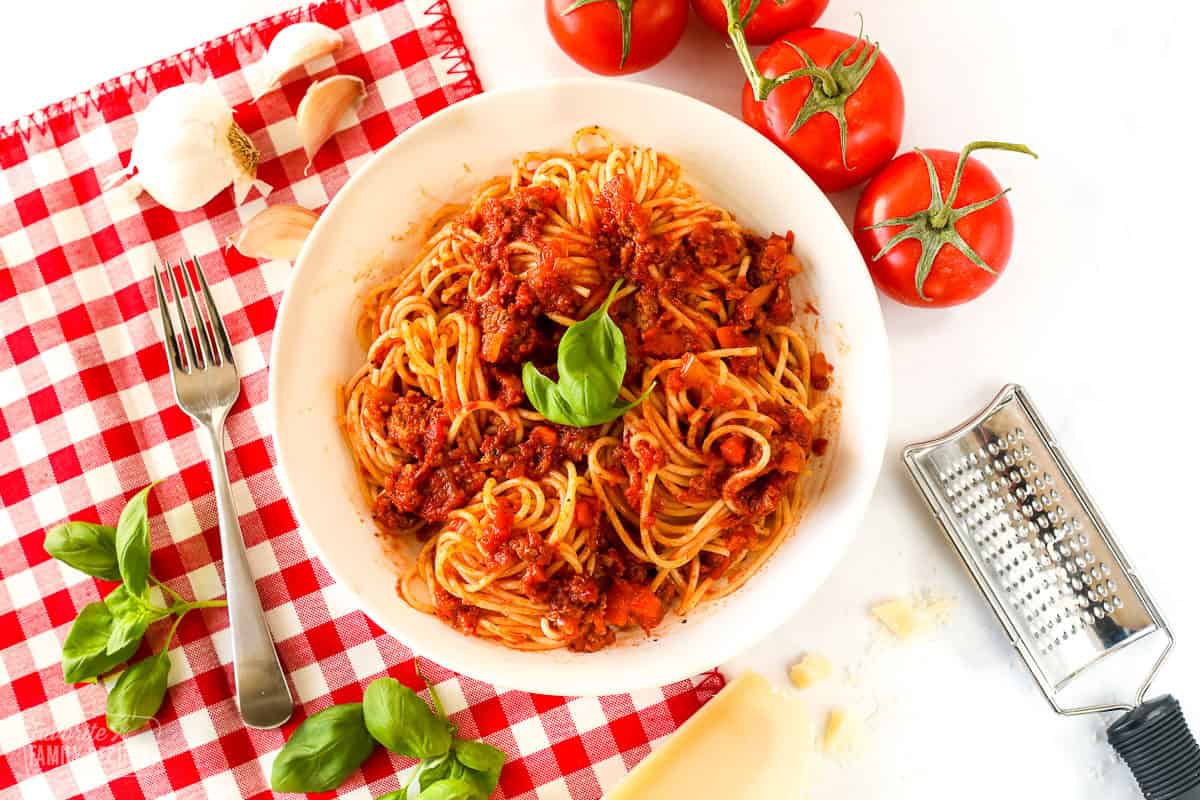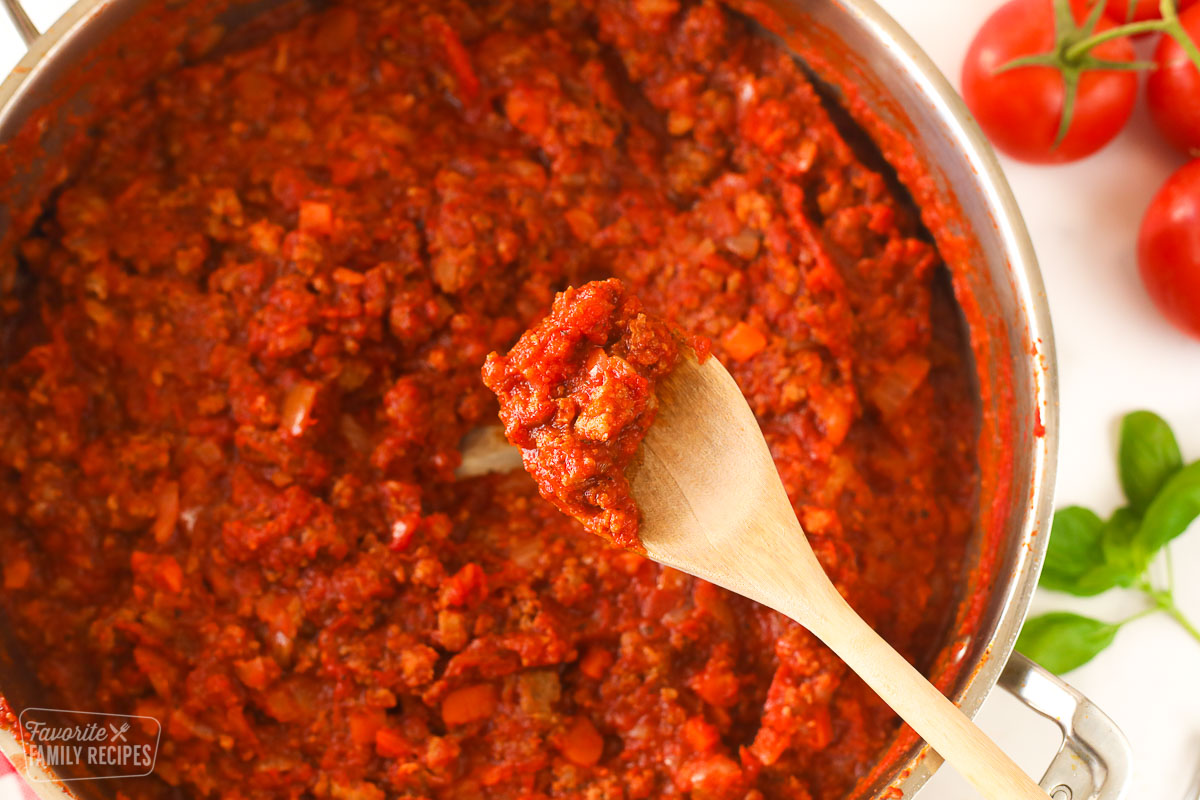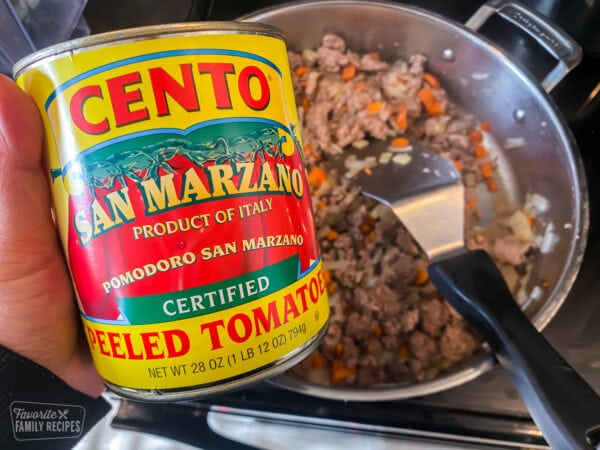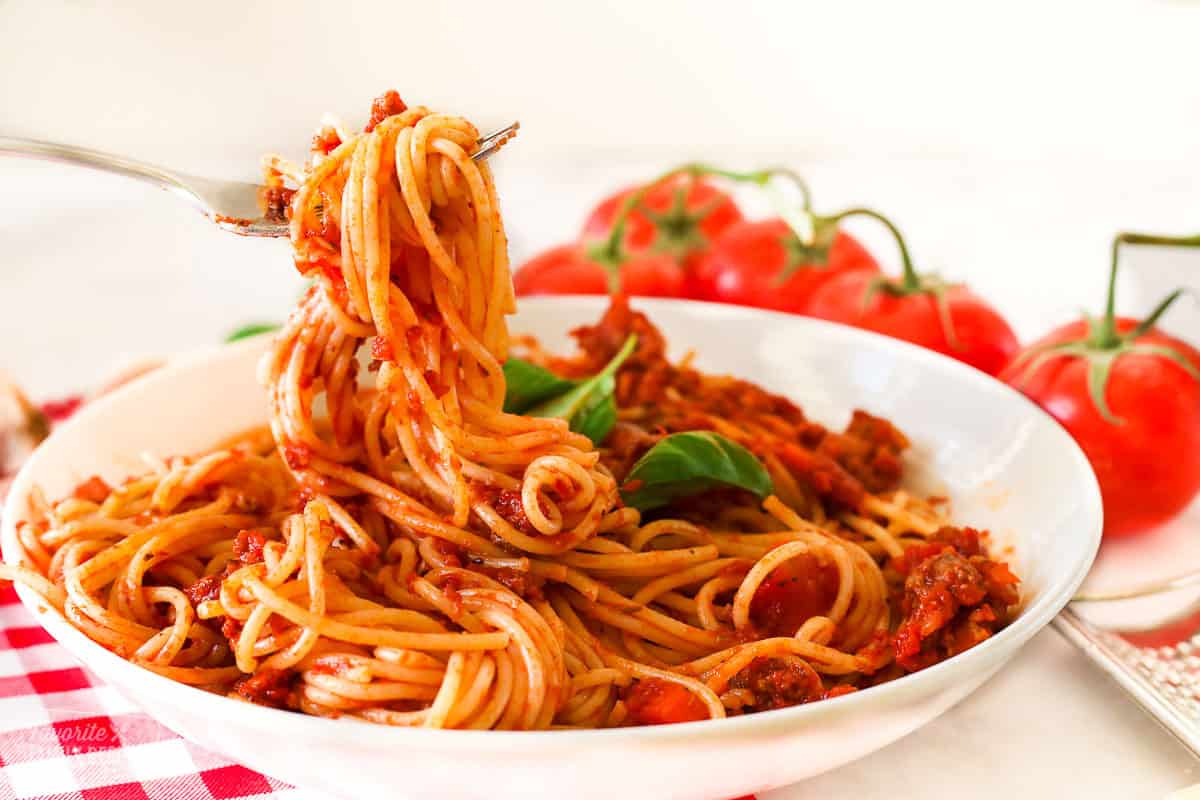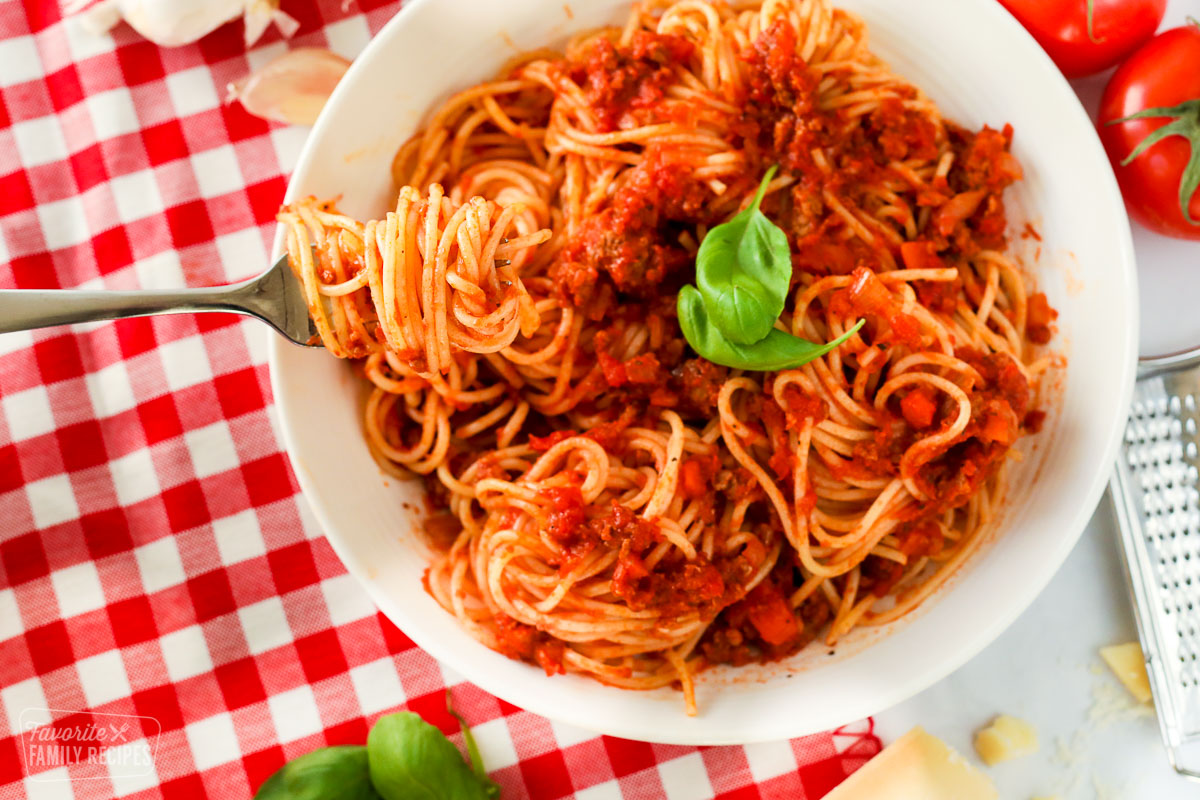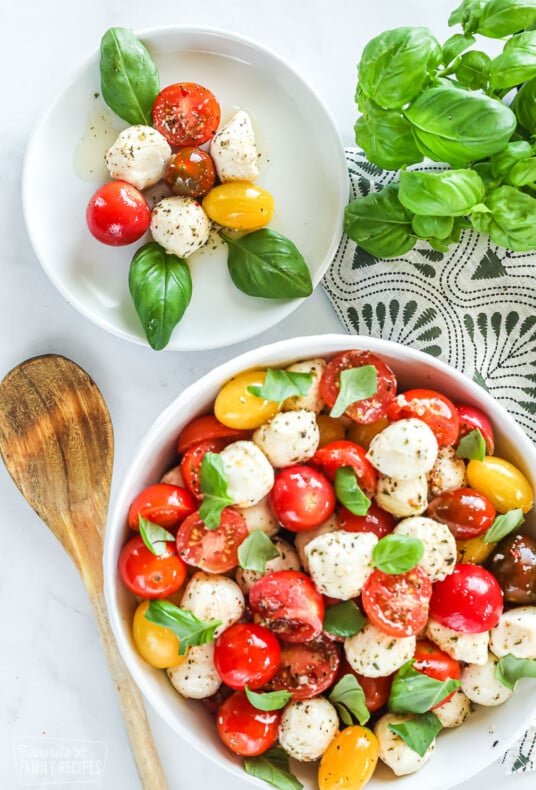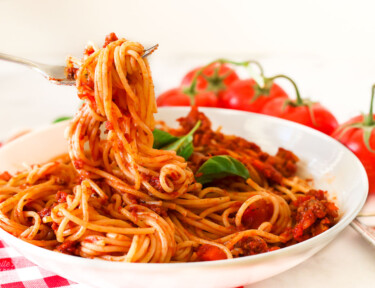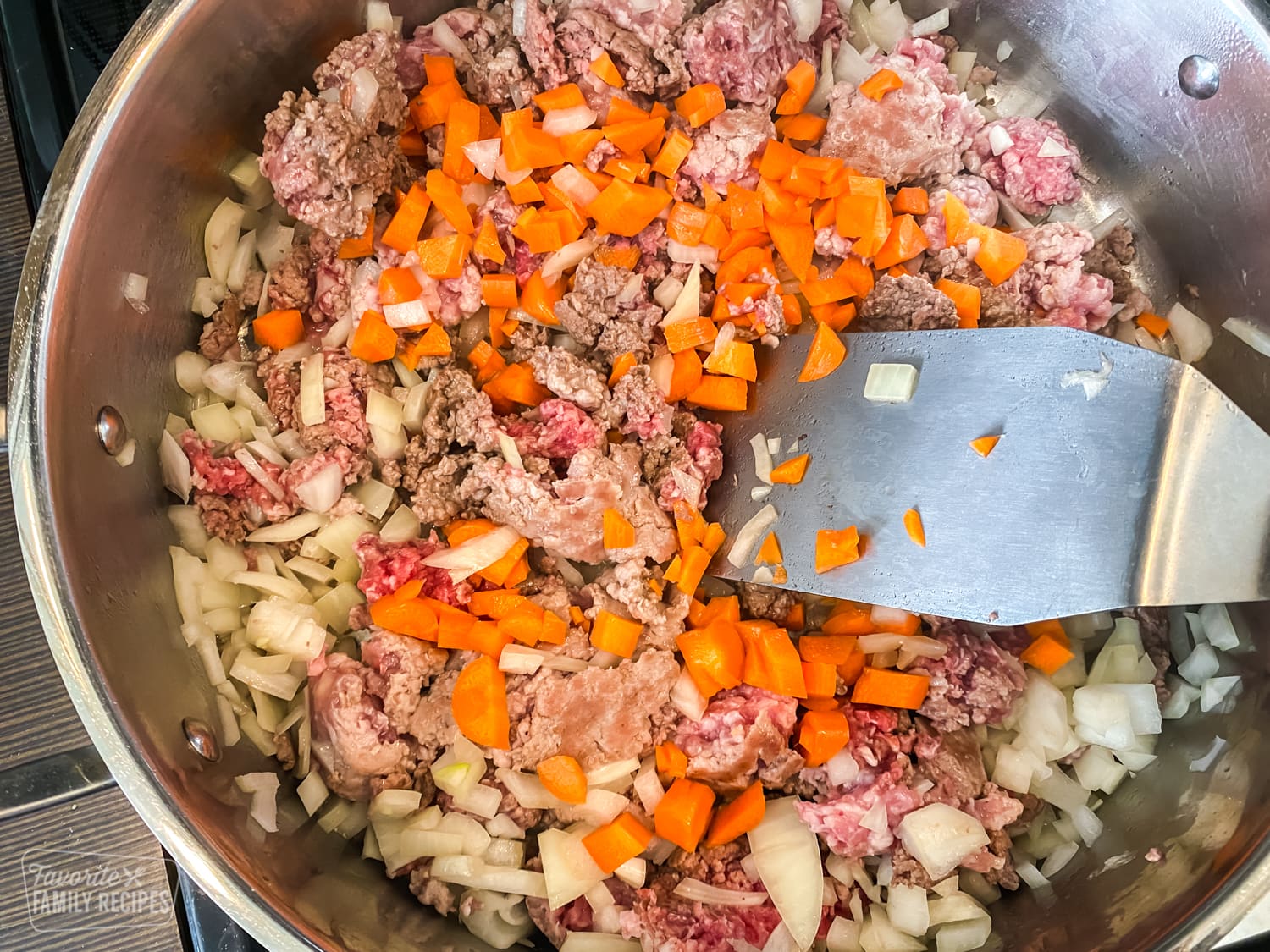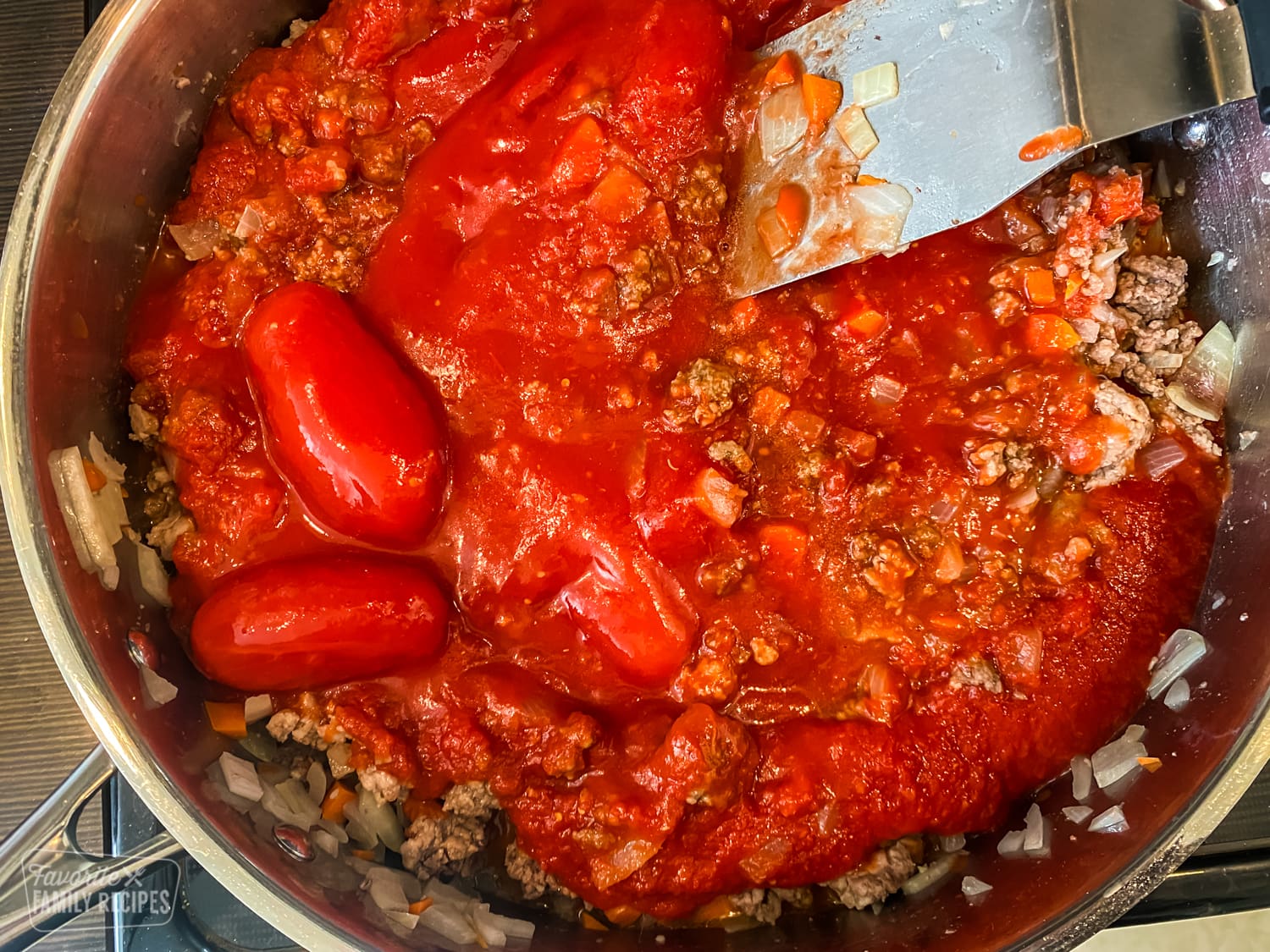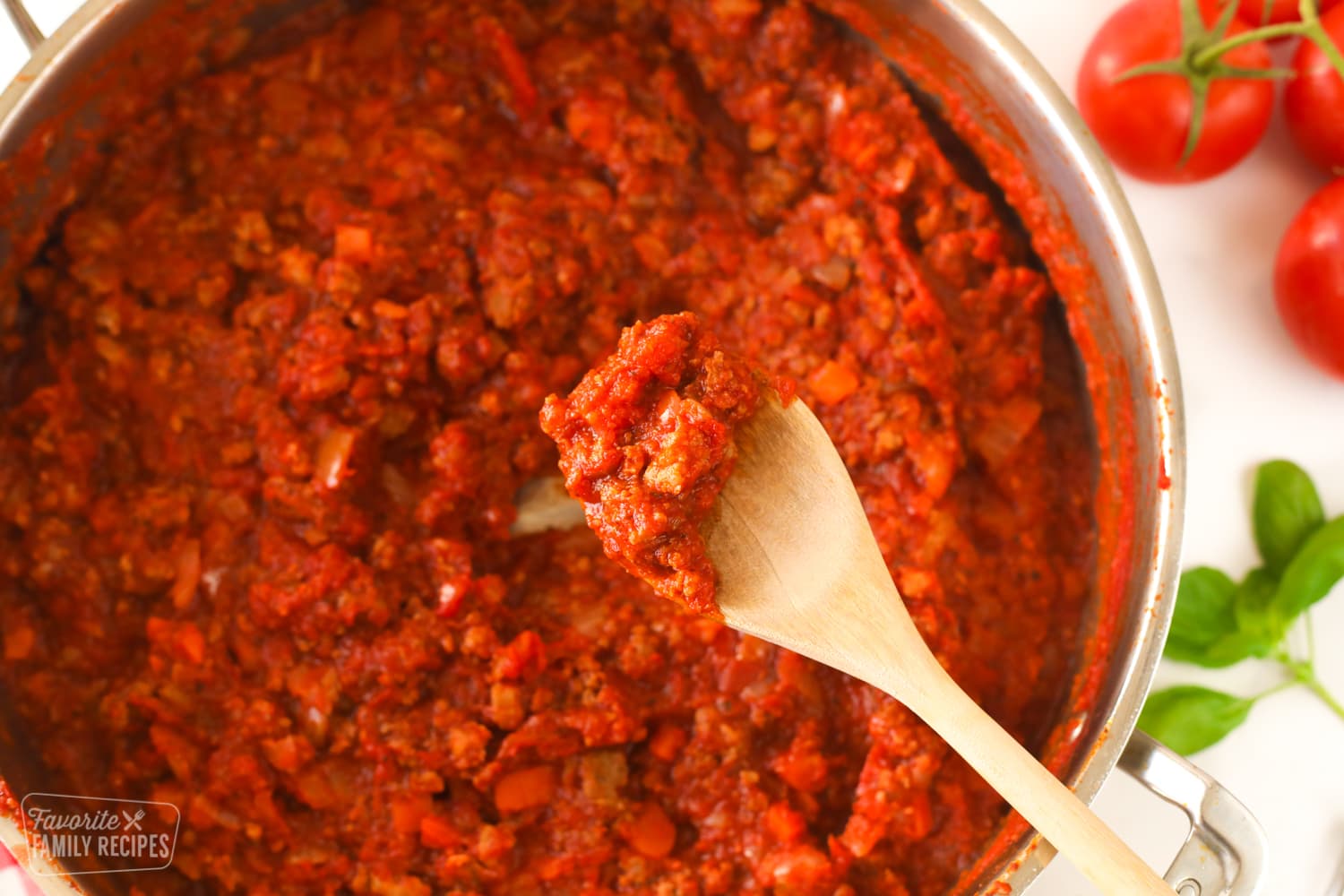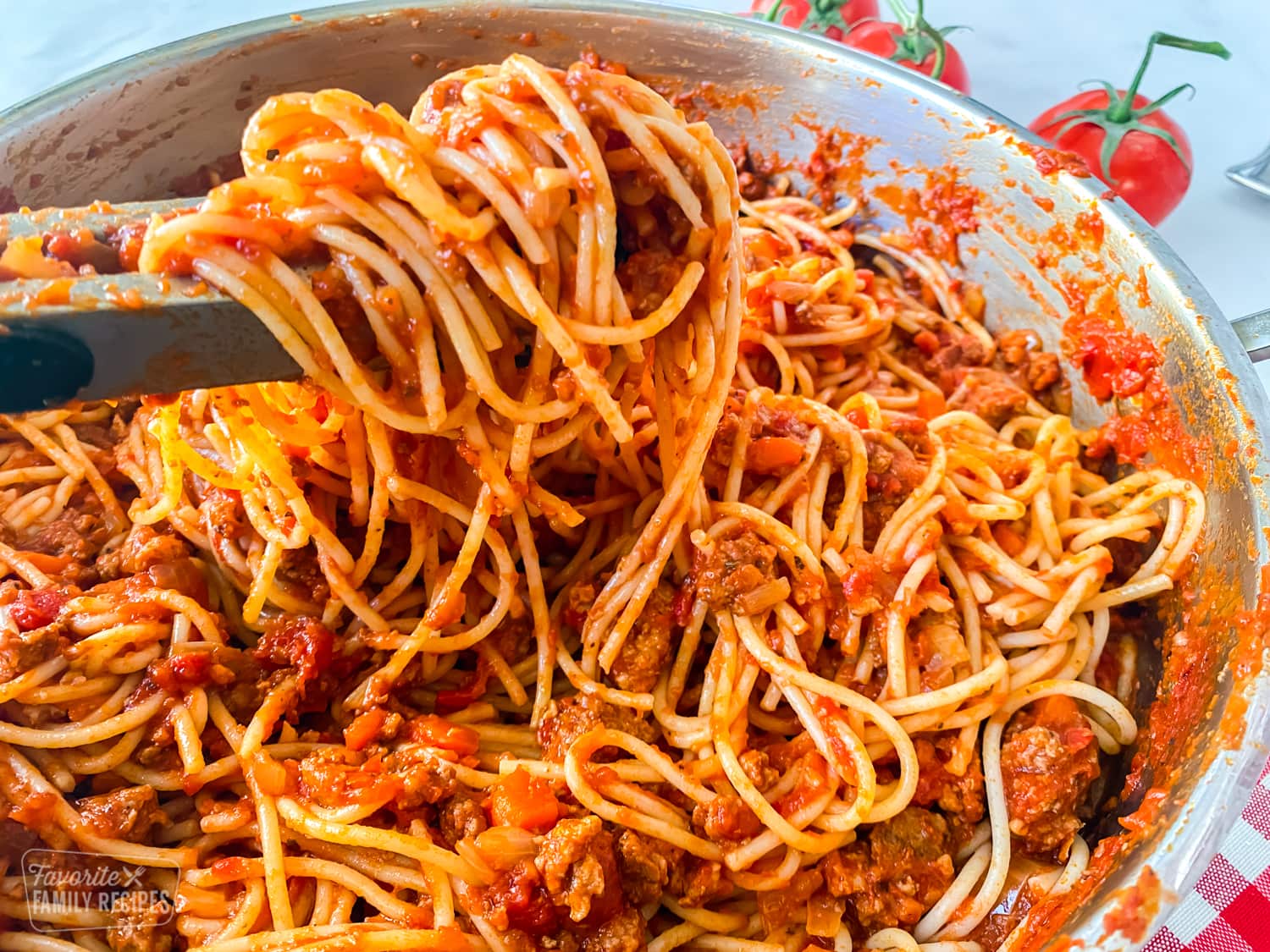You can never go wrong with Italian-inspired meals, especially a good, hearty pasta. We love using fresh, garden tomatoes for our spaghetti sauce, and will often make homemade canned spaghetti sauce when we have an abundance of tomatoes so we can enjoy the bright, fresh flavor all year long. This is an actual, Italian spaghetti recipe that comes straight from Italy. In our family, we lovingly call this recipe “Nicco’s Sghetti”. My husband’s brother, Nick, spent two years in Italy and brought home all sorts of delicious, authentic Italian recipes, including this one! Thanks Nick for sharing this recipe! I don’t think I will ever be satisfied with any other spaghetti!
Ragu, Bolognese, Marinara, and Spaghetti Sauce
The sauce for this spaghetti is a true Italian “ragu”. So what exactly does that mean? It is easy to get confused with all of the different kinds of “red” sauces for spaghetti. What’s the difference? IS there a difference? Truth is, they are all similar and some are simply variations of one another, but they have their differences. Allow me to explain… Here is a quick lesson on common spaghetti sauces:
Ragu – Ragu is a meat-based sauce made with sautéed vegetables and simmered slowly for hours in tomato, broth, wine, and/or milk. There are two common variations of ragu: Ragu alla Bolognese and Ragu alla Napoletana. Ragu alla Bolognese (aka Bolognese) – From the Bologna (Northern) region in Italy. Uses less tomatoes and white wine. Traditionally served with wide pasta or lasagna. Ragu alla Napoletana – From the Naples (Central/Southern) region in Italy. Uses more tomatoes and red wine. Traditionally served with thinner pasta, such as spaghetti. Pomodoro Sauce – (also known as Sago di Pomodoro) is a simple tomato sauce that is smooth and flavorful. It is another great authentic sauce for spaghetti that we got from Italy! Marinara – Marinara is a simple tomato sauce with common Italian seasonings. Unlike the sauces above, marinara is heavily tomato based and does not contain meat. Though the sauce is mostly tomatoes, it may or may not include onion or other vegetables. Marinara is bright, acidic, and light, as opposed to the above sauces which are more rich, hearty, and complex. Spaghetti Sauce – Spaghetti sauce is an Americanized term for any kind of red sauce that is served over noodles. It can include any of the sauces above. Be sure to try our Homemade Canned Spaghetti Sauce. This is our favorite way to make our fresh, garden tomatoes last all year!
What Meat Is Best For Spaghetti Meat Sauce?
Spaghetti sauce is not limited to just one kind of meat. Here in the U.S., we often think spaghetti is limited to meatballs or ground beef, but in Italy you can find ragu using braised beef, lamb, chicken, fish, veal, or pork. Depending on what region in Italy you are visiting (or using recipes from), meat can be simmered in large portions and then removed and served separately from the pasta and sauce, or the meat can be cut or broken into smaller pieces and served in the sauce. Either way, the meat is simmered in the sauce to give the sauce that deep, rich, meaty flavor.
What Tomatoes Are Best For Homemade Spaghetti Sauce?
If using fresh tomatoes, you can never go wrong with a good Roma tomato for spaghetti sauce. Romas are good, meaty tomatoes with few seeds and cook down well into a sauce after they are heated. Dip them in boiling water for 30 seconds to make removing the skins easier before cooking. If using canned tomatoes, my VERY favorite are San Marzano tomatoes. These tomatoes come straight from Italy and they are by far the best. I like getting the 28 oz. can of the whole, peeled tomatoes and crushing them myself with a spatula after they soften and simmer down. They are much better than using crushed tomatoes.
Ingredients
Extra virgin olive oil Onion Carrot Ground beef Ground pork – optional Tomatoes Basil leaves Sugar Kosher salt Pepper Beef broth – if needed, to taste Spaghetti noodles
Tips For Making Italian Spaghetti
Learning to get the perfect spaghetti and sauce takes some practice but once you get it down, it’s easy! Here are some tips for making the perfect Italian spaghetti:
Tips for cooking the spaghetti noodles
Salt the pasta water. Not just a pinch. You want to add a good amount, enough that when you taste the water you can distinctly tell that there is salt there. Stir While Cooking: Stir the pasta immediately after adding it to the boiling water to prevent sticking. Stir occasionally during cooking to ensure even cooking. Cook Al Dente: Follow the recommended cooking time on the pasta package, but taste-test a minute or two before it’s supposed to be done. The pasta should be firm to the bite (al dente). Save Pasta Water: Before draining the pasta, reserve a cup of the pasta cooking water. It’s rich in starch and can be used to adjust the consistency of your sauce.
Authentic spaghetti sauce tips
Use Good Tomatoes. If you can’t peel and dice your own fresh garden tomatoes, whole canned D.O.P. San Marzano tomatoes (from the grocery store, look for the DOP label) are the best substitution. Let It Simmer. The best spaghetti sauces take time. The longer you can let those flavors reduce and simmer together, the better. In many Italian kitchens, the sauce will simmer all day long before being served. It will get nice and thick without having to add tomato paste! Use Ground Pork. You can use all pork or a mixture of pork and beef. Red Wine (optional): add a splash of red wine to the meat after browning but before adding the other ingredients for a new dimension of flavor. Toss It All Together: In Italy (at least in the region where Nick lived), they don’t pour the sauce over the noodles. It is all tossed together and then served! Fresh Herbs: Use fresh herbs like basil, oregano, and parsley to garnish and flavor your pasta. Add them just before serving to preserve their freshness. Balance the Sauce: Taste your sauce and adjust the seasoning as needed. You might need a pinch of sugar to balance acidity or some salt and black pepper for flavor. Cheese: Grate or shave fresh Parmesan or Pecorino Romano cheese over the pasta. This adds a salty, nutty flavor that complements the sauce. Don’t Over-Sauce: The sauce should coat the pasta, not drown it. Start with a small amount and add more as needed. Finish in the Pan: Finish the pasta in the pan with the sauce for a minute or two. This allows the flavors to meld. Use a little reserved pasta water if needed to thin. Serve Hot: Serve your Italian spaghetti piping hot for the best taste and texture.
Read Next: Spaghetti Casserole
What To Serve With Spaghetti
When we were growing up, our mom would almost always serve spaghetti with peas. You can also serve your spaghetti with a side salad, or one of these tasty side dish ideas:
Pizza Factory Bread Twists Olive Garden Zuppa Toscana Oven Roasted Vegetables Grilled Caesar Salad
How to Make Authentic Italian Spaghetti
Breadsticks (Breadtwists)
Zuppa Toscana
Oven Roasted Vegetables
Caprese Salad
We want to hear from you! Please leave a review. Rate and Review
